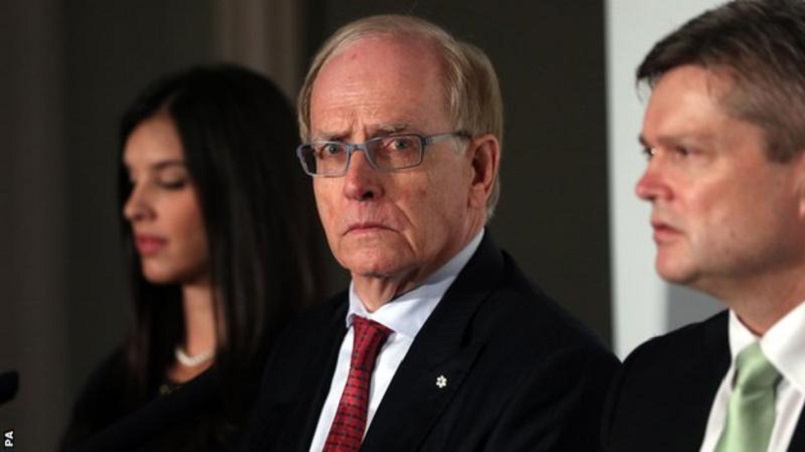
More than 1,000 Russian athletes benefited from a state-sponsored doping programme run for four years from 2011, a new report claims.
The final part of the McLaren report implicates four medallists at Sochi 2014 and five from London 2012.
Adding more details of the doping it revealed in July, the report described an "institutional conspiracy" involving Russia's secret service.
It said the athletes did not act alone but were part of a programme.
The report's author, Professor Richard McLaren, who was appointed by the World Anti-Doping Agency, said: "There was a cover up that evolved into an institutional and disciplined medal-winning strategy."
The report said the system was refined over the course of the London 2012 Olympics, 2013 World Athletics Championships in Moscow and the Sochi Winter Olympics where a now "fail safe" system was in place to protect likely Russian medal winners.
Russia won 72 medals at the London Games, 21 of which were gold, and 33 medals at Sochi 2014, 13 of which were gold.
"The Russian Olympic team corrupted the London games on an unprecedented scale - the extent of which will probably never be fully established," the report added.
"The desire to win medals superseded their collective moral and ethical compass and Olympic values of fair play," McLaren wrote.
The report added depth and supporting evidence to the initial findings published in July - that Russia operated a state-sponsored doping programme.
That first report was met with denials from Russia and calls for more proof from the International Olympic Committee.
The new report also found:
- At the Sochi Games, two Russian female ice hockey players had male urine samples
- The samples of four Russian gold medal winners in Sochi were tampered with
- Emails were found asking for instructions from the Russian Ministry of Sport on what to do with a positive sample - save or quarantine?
- It found spreadsheets containing lists of athletes whose samples had been saved
- A clean urine bank was also kept in Moscow
Urine sample swapping common practice
The first McLaren report explained how disappearing positive drug testswere secreted through "mouse holes" drilled by spies.
That was based on information received from Dr Grigory Rodchenkov, a former director of the anti-doping laboratory at Sochi 2014.
He had said the Russian secret service developed ways of opening sample bottles and replacing their contents without intervention being detected.
The new report claims to have compiled clear details on exactly how the sample bottles in Sochi were tampered with.
Investigators used a tool which matched the description of one used by the FSB (Russian Federal Security Service), which leaves tiny marks and scratches on the inside of the cap.
An expert was given 13 bottles, one of which had not been tampered with, which he immediately spotted.
In cases of alleged sample swapping, investigators found there were scratches and marks on the inside of the cap, along with DNA inconsistencies.
